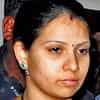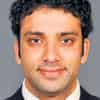What makes a corporate consultant opt to work in the rural interiors?
HT spoke to few young professionals who are a part of a government fellowship that’s attempting to bring change to the countryside. Almost all of them agreed that they now realise that governing a country as diverse as India is not an easy task.
Shashi K Verma is 27 and has a BE (IT) degree from Vinayaka Missions University, Chennai. Like most of his batchmates, Verma took the tried-and-tested route after he graduated. He joined a multinational technology firm and hoped to climb the corporate ladder as quickly as possible.

But after working for two and a half years on “prestigious projects”, Jamshedpur-born Verma decided to take a detour: the young engineer applied for the Prime Minister’s Rural Development Fellows Scheme (PMRDFS) in 2011-2012, the inception year of the programme.
“The programme is an offspring of the marriage of two thoughts: on one hand, there is a huge development deficit [in the country] and on the other, there are young people from diverse backgrounds who have the passion, the energy and a craving to contribute to grassroots development,” Varad Pande, Officer on Special Duty to Jairam Ramesh, minister for rural development, told a TEDx conference at Indian Institute of Management, Ranchi, recently.
“I always wanted to work with people and take technology to the last person,” Verma, who is posted in Maoist-hit Simdega, Jharkhand, told HT. “This is a great opportunity... but even then leaving a good job and joining PMRDFS was not an easy choice. Till the last moment, I was in two minds”.
Now, after working for 19 months with the Simdega district administration, Verma is convinced that he took the right decision. “My engineering background taught me to see everything in black and white, but after working at the ground level, I have started appreciating the shades of grey”.
In the first year of the programme, 137 fellows were placed in 82 districts. To induct the best and the brightest, a transparent recruitment system and a training programme by the Mumbai-based Tata Institute of Social Sciences were put in place. The assessment process includes All India Competency Assessment Test, a written test and a personal interview. The fellows are not government employees but get a stipend of Rs. 75,000 per month in the first year with a 10% increase in the second and third year. The second batch (2012-2013) has 140 fellows and the programme’s geographic footprint has now been expanded to include J&K and the north eastern states.
“There is an acute scarcity of professional human resource in the districts. So the fellows are an asset to us,” said Nand Kumaram, district magistrate, Anuppur, Madhya Pradesh. ‘They are young, committed, energetic and eager to contribute. The best way to utilise them would be to match their skill set with the needs of the district.”
Hindustan Times spoke to a number of Fellows on their work, their rich experiences and views on the existing structure and the quality of governance, an issue that has also been a big talking point in this election. Almost all of them agreed that they now realise that governing a country as diverse as India is not an easy task and that it is not fair to blame the government all the time. There is also the realisation that all officials are not corrupt. “There is so much work at the district level... it is mindboggling. Officials spend so much time doing their daily work that they don’t have the inclination or time to think outside the box,” said Swasti Pachauri, who is in Seoni, Madhya Pradesh. “Plus, there’s a severe lack of managerial acumen. We see ourselves as catalysts who can fill this gap and improve the processes of service delivery”.
Being lateral entrants into the Byzantine system, the PMRDFs also face their share of challenges like understanding the intricacies of projects, the reporting structure and the human resource that is available. “Even writing formal Hindi letters is a challenge,” said Harsha Vashishtha, who works in Bastar, Chhattisgarh. Many face awkward questions on their salaries and their intentions.
“The babus love the rulebook and often refuse to be flexible. For example, the NREGA has a lot of flexibility but the middle and lower level officials are not keen to try new things,” said Anshuman Gupta, based in Surajpur, Chhattisgarh.
The problem lies in the lack of re-skilling opportunities for government officials, said Mayur Gupta, who is placed in Kondagaon, Chhattisgarh. “Lack of accountability, erratic transfer policies and no continuity in many programmes only complicates matters”.
Nand Kumaram agreed that PMRDFs sometimes feel dejected because changes are not always visible: “Even IAS officers can’t change things overnight. The PMRDFs are young and idealistic but they must realise that monitoring and evaluation of the programmes is their real work”.
Despite these hurdles, the PMRDF fellows, said that the experience has been rich. “The magnitude of the problems, the number of people we need to engage with is a valuable training that no private job could have given me,” said Pachauri, who has worked with consulting companies. “It is practical training. No rhetoric is accepted. You have to show numbers and results”. Others said that their stints with district administrations have taught them negotiation tactics, improved their multi-tasking capabilities and have made them patient.
“I often find it difficult to explain what is is that I’m working on. For most, the administrative services and NGOs represent opposite ends of the development spectrum. Trying to jostle your independent space through them and facilitating ‘change’ is difficult if not impossible,” summed up Arindam Banerjee, who is posted in Paschim Midnapur in West Bengal, when asked to evaluate his experiences. “But now, I thank myself that I made a choice to be a part of such an interesting journey and possibly when I complete this fellowship, I shall look back on the time spent and re-affirm my belief – ‘We are all governed by the choices we make in our lives’.”
What iS PMRDFS?
The PMRDFS is a short-term (two to three years) opportunity for young women and men from different backgrounds to work with the government in India’s most backward and tribal districts with the aim to improve the implementation of schemes and reduce the developmental and governance deficits that plague these areas. The average age of the fellows is between 22-27 years and for SC/ST candidates, the maximum age limit is 32 years. The PMRDFS is an initiative of the rural development ministry.
Why they did it
* Swasti Pachauri (30) Seoni, Madhya Pradesh
An economics graduate from Hindu College, Delhi University, who followed it up with a degree at the Tata Institute of Social Sciences, Mumbai, Pachauri left a corporate consulting job to take up this fellowship. Since she has always been interested in handicrafts, Pachauri decided to use this opportunity to develop a link between rural artisans and the market.
She has mapped all the handicrafts of the state and is now working towards setting up offline and online stores. “Rural entrepreneurs are constrained by time and credit deficit. Yet they keep churning out beautiful stuff. They are the best entrepreneurs,” said Pachauri. The first store has already been set up near the Pench National Park.
* Priya Tayade (28) Gadchiroli, Maharashtra

An MA in development studies from the Tata Institute of Social Sciences, Tayade joined the PMRDF after spending two years in the development sector. In the last few months, Tayade has been part of a very important programme: infrastructure gap analysis in the district.
“We have built a massive database on the available basic amenities vis-a-vis access to amenities,” she told HT. “This will help us zero in on the areas that need better investments”.
One of her enduring memories of the initial weeks was a visit to a village where she was welcomed warmly because she was the first government official to visit the village since 1947. “I did not know how to react. I was shocked.”
* Anshuman Gupta (27) Surajpur, Chhattisgarh

Gupta has an interesting combination of academic degrees: he did BE Electronics and Communication from the Manipal Institute of Technology, Karnataka, and then topped it up with a post graduate degree in rural management from the Indian Institute of Rural Management, Anand, in 2011.
A city-bred boy, Gupta is involved in the MNREGA programmes, but his key interest is the skill development mission programme.
* Arindam Banerjee (26) Paschim Medinipur, West Bengal

A comparative literature graduate from Jadavpur University, Banerjee has an MA in media and cultural studies from the Tata Institute of Social Sciences (TISS).
He pet project is the Muktidhara livelihood project, which aims to organise and nurture existing women’s self-help groups into livelihood clusters and link them to financial institutions with credit linkages for better livelihood support in convergence with the existing schemes.
* Shashi K Verma (26) Simdega, Jharkhand

An engineer, Verma is now trying to look into very serious issues of child trafficking in the area. "Once we rescue a girl, we have to temporarily rehabilitate her and also look into a long-term engagement with her. We don’t have shelter homes where we can keep these girls," said Verma.
He is working on a plan to redress this situation. Being a part of a Red Corridor, Simdega also has child soldiers. Verma is trying to work with them as well.
* Harsha Vashishtha (30) (Bastar/Chhattisgarh) and Mayur Gupta (30) (Kondagaon/ Chhattisgarh)

They are the only couple in the first batch of the PMRDF. Harsha a neuro-therapist is involved with the Livelihood College in her district and her core work is to spread awareness about skill development.
“It’s exciting to work since this programme combines creativity, tradition and culture, human resource and infrastructure development and women and youth empowerment.”
Her husband and fellow PMRDF, Mayur Gupta, who has a Masters in public health, is the nodal officer in the health and labour departments. He also started the livelihood college in his district.






